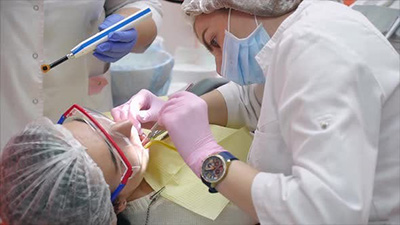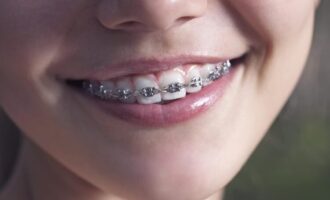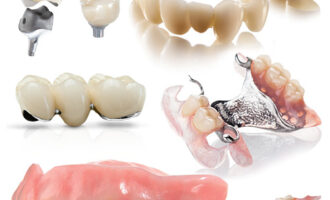The term "root resorption" is used to describe the loss of root cement and (or) dentin as a result of the activity of cluster cells, commonly referred to as odontoclasts. With the exception of physiological resorption of the roots of deciduous teeth during the eruption of permanent, root resorption is pathological and in most cases is associated with inflammatory responses to infection. Root resorption can also result from acute trauma, growth of pathological formations (tumors and cysts) and dental procedures (eg, during replantation or orthodontic tooth movement). Depending on the primary involvement of the pulp or periodontal ligament with damage to the walls of the root canal or the outer surface of the root, respectively, distinguish between internal and external resorption.

Apical inflammatory root resorption of endodontic origin should be distinguished from invasive cervical root resorption, or subepithelial external root resorption. The last form of resorption does not result from pulpitis, and periodontitis, but secondary pulp involvement is allowed.
Histological signs of apical root resorption of varying intensity are found in almost all cases of pulp necrosis and apical periodontitis. In experiments on mice it was established, that all teeth experience root resorption after pulp infection. Root resorption against the background of apical periodontitis may be accompanied by extensive destruction of its apical part with tissue damage near the apical foramen and the internal walls of the canal. In histological examination 114 teeth with apical periodontitis Laux et al. identified 30 samples with significant defects in the outer surface of the root apex, as well as the walls of the root canal near the apical foramen. In some cases, resorption led to widening of the apical foramen, giving it a funnel shape and weakening the root, up to the separation of dentin fragments and their migration into adjacent tissues. When studying a similar sample of tops 104 roots using scanning electron microscopy Vier and Figueiredo found resorption in many cases, the form and severity of which corresponded to the results of Laux et al.. The correlation between the presence or extent of resorption and the histological type of the lesion has not been established.
With the development of apical periodontitis, root resorption begins simultaneously with bone resorption in the early stages of inflammation. Along with the destruction of the periodontal ligament, root cement is exposed, which increases the risk of its destruction by clastic cells. The process that has begun continues as root resorption progresses., but at the same time, similar to traumatic resorption, reversible and progressive types can be distinguished. Consequently, Histological examination of preparations makes it possible to simultaneously identify areas of active resorption, as well as resorption defects partially or completely filled with root cement. Remains unclear, why, in the presence of the same causative factors, tissue destruction becomes extensive in some cases and absent in others.
Root resorption, which significantly changes its shape, determined radiographically. In the absence of noticeable root shortening, But in the presence of extensive zones of rarefaction in different parts of the root, internal and external resorption are radiologically distinguished. While maintaining the contour of the root canal above the rarefaction area, resorption is external. A sharp interruption of the canal contour in the defect area is characteristic of internal resorption.
X-ray identification of small foci of resorption is difficult. Laux et al compared the radiological and histological appearance of apical the periodontium. Radiological signs of apical inflammatory root resorption were noted only in 19% teeth, while histologically apical resorption was observed in 81% drugs. X-ray and histological diagnosis of resorption coincided only in 7% cases. According to the authors, Targeted radiography routinely performed in clinical practice does not reveal root resorption due to apical periodontitis..
Deformation of the root apex as a result of resorption significantly complicates endodontic procedures.. In such cases, it is impossible to accurately determine the true extent of root resorption radiographically.. An indirect clinical sign may be prolonged bleeding during instrumentation of the apical region.. At the same time, the clinician faces a difficult choice between limiting the working length to the level of bleeding tissue and removing the latter. If resorption is extensive, any attempt to remove apical soft tissue will be futile, and the effectiveness of electronic apex locators in such situations is questionable.
Besides, excision of tissue in an attempt to approach the apical foramen can easily lead to the removal of instruments beyond the root. Cotti et al.. described extensive root resorption of the mandibular second molar, resembling incomplete root formation, in the patient 20 years old. In this case, instrumental treatment to the level of resorption with the application of a calcium hydroxide bandage allowed us to achieve a successful result, however, further research is needed to confirm the effectiveness of this method.
For internal or external tooth resorption, subject to restoration, carry out endodontic treatment, the purpose of which is to eliminate the causes of periradicular inflammation, which leads to a decrease in the activity of clast cells and promotes healing.





